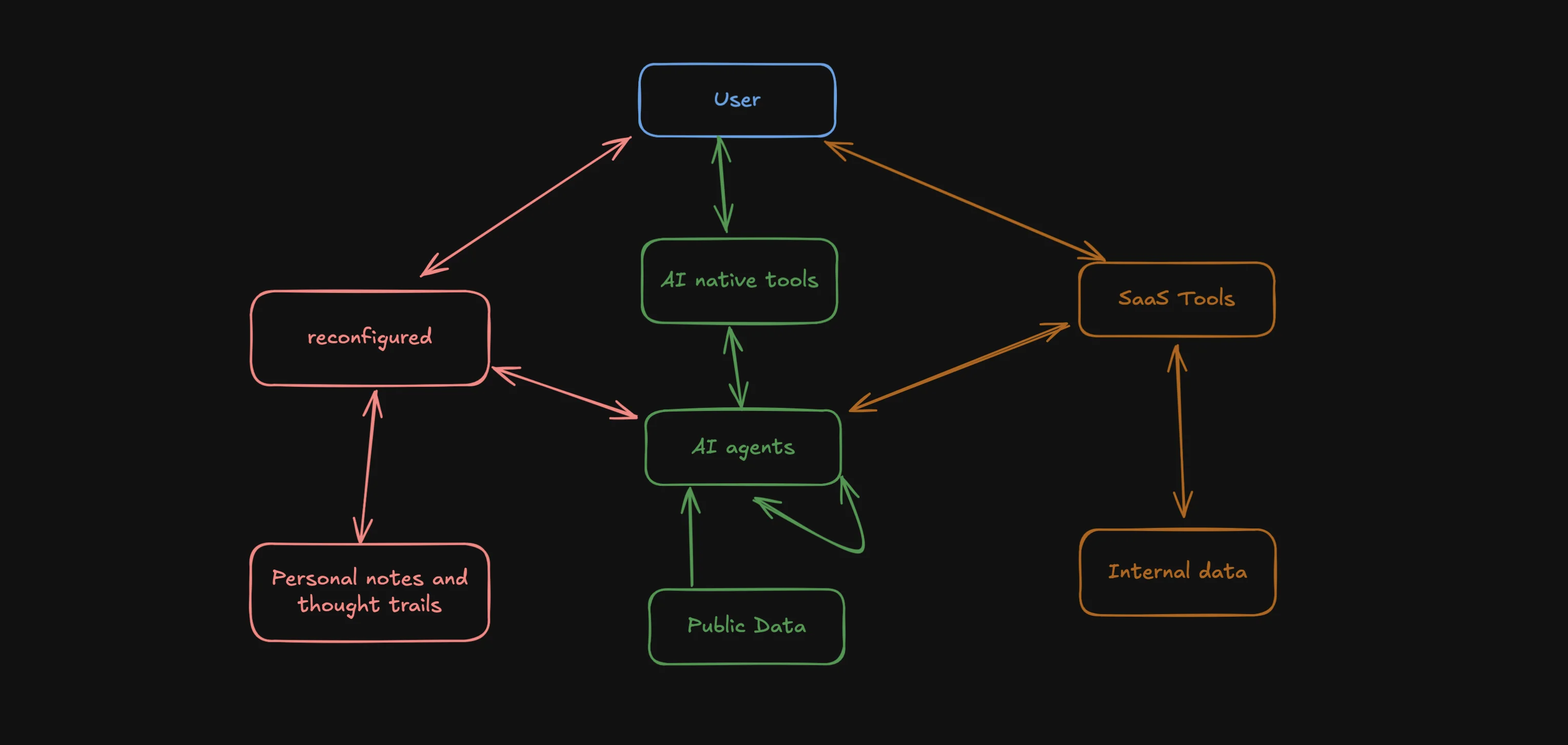
The Evolving AI Agent Ecosystem - Why One Agent Won't Rule Them All
{frontmatter.title}
The ChatGPT era has everyone thinking that one super AI agent will eventually rule them all. But I've been building and thinking about this space extensively, and I'm convinced the future looks completely different.
We're not heading toward a single AI overlord – we're witnessing the birth of an entire AI agent ecosystem. Just look at Y Combinator's list of requested startup ideas, which specifically calls for "agent building blocks: tools, APIs, or platforms that enhance agent capabilities."
The SaaS Parallel: It's All About the APIs
This emerging ecosystem reminds me of the SaaS wave. Remember when every business function suddenly got its own specialized cloud tool? What made that revolution work was standardized REST APIs. Similarly, the AI agent ecosystem will thrive on standardized ways for agents to access data and capabilities from different sources.
I've been running 2 Claude Code agents simultaneously the other day (I guess I need more screens to run an agent farm! 🤪), and it struck me how they sometimes provide really good code but need careful review. Sometimes they reimplementent stuff they should have just imported. This is exactly the kind of integration challenge the ecosystem needs to solve.
What This Ecosystem Will Look Like
The AI native landscape is splitting into two main categories:
- Deep Tech - Companies building better foundation models, semantic indexing systems for RAG, and other infrastructure
- UX-focused - Tools to manage fleets of agents, integrate with data sources, and create intuitive interfaces
We'll see overlap, naturally. Your CRM provider might offer their own agent UI while still exposing data for external agents. This makes sense - people already working in those tools need to become more productive quickly.
Take Microsoft - they're adding Copilot everywhere, but they're also building an ecosystem where third-party agents can access their data. Same with Salesforce and their Einstein. It's not either/or – it's both.
Where Does reconfigured Fit?
Companies already have vast amounts of stored data, but if we're honest, internal documentation is rarely up to date. Only a fraction of knowledge gets documented accurately. Every organization has tribal knowledge stored in people's heads, personal notes, and yes, post-its on desk corners.
At reconfigured, we're uniquely positioned to solve a corner that we don't see others addressing. We're building an API for AI agents to access human context – context that's updated continuously, offering data that hasn't been accessible before.
The big problem with most AI agents today is the context window. They're limited by what they can "see" in the moment. But what about all those half-formed ideas, quick brainstorms, and ongoing investigations your team has captured? That's where we come in.
I found myself wondering recently why I chose this particular combo to build. On the surface, reconfigured sounds simple: a journaling tool for analytical people doing investigative work. But there are so many layers to it!
We've focused on building superior UX for capturing thoughts and ideas. Often, our real competitor isn't Notion – it's pen and paper. People need to capture knowledge without losing focus. Then we transform these insights into actionable knowledge.
Building a Second Brain for Teams
It's not just about personal notes. All notes and thoughts within an organization are connected in reconfigured, making the system better as more people use it. It becomes not just a second brain for a single user but for the entire team and organization.
This past week I created a new AI backend for reconfigured that supports all the use cases we're planning in the near term. Had to roll my own because the way we handle per tenant data meant I couldn't use existing "AI frameworks" the way I needed them to work.
Context is king! I was listening to a data day recap with Joe Reis and others, and they highlighted the value of context. If we want to win in this ChatGibidy/AgenticAI era, we need to link information and data that we already have together.
The API for Human Context
So how does this all connect back to the agent ecosystem? We don't believe we'll solve these challenges alone. We're building reconfigured to connect with different tools and agents across organizations – pulling relevant info for users and providing data to other agents they couldn't access before.
When a standalone LLM agent gets stuck trying to understand company-specific terminology or workflows, it needs access to the living, breathing knowledge graph that exists within your organization. That's what we provide.
The real magic happens at the intersection – when your personal notes connect with team discoveries, which connect with your organization's formal knowledge base, which connects with public data. An ecosystem.
What's Next?
This AI agent ecosystem is still in its infancy. The winners will be those who recognize it's not about building the one perfect agent, but rather creating components that seamlessly integrate with each other.
For reconfigured, our roadmap is clear: keep improving our UX for fast and frictionless thought capture, expand our AI capabilities to better extract and connect knowledge, and build robust APIs for other agents to access this contextual knowledge.
We're moving toward a future where your personal AI assistant might call on a specialized research agent, which might pull data from your reconfigured knowledge graph, which might reference your latest Salesforce data. All working together to help you make better decisions.
Feel free to connect with me on LinkedIn if you vibe with these ideas.
... and definitely try out reconfigured if you haven't already. 😉